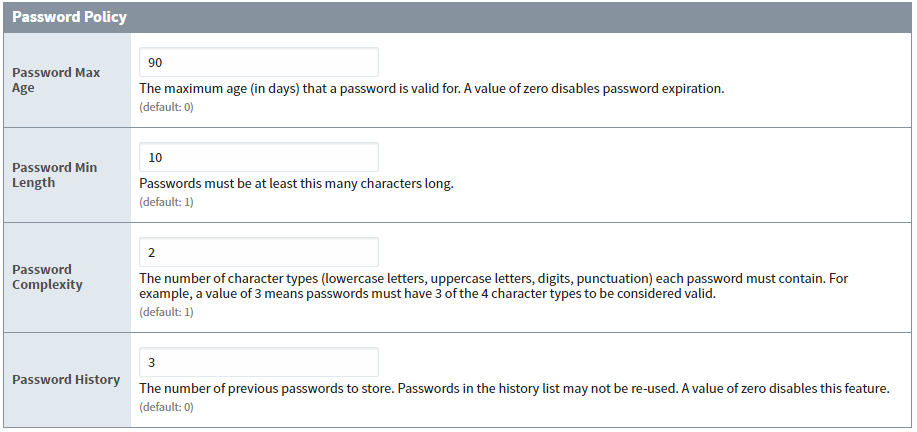Internal Authentication
Internal User Sources
An Internal type User Source stores user information internally in the Gateway's database. This means that Internal User Sources are included in Gateway Backup files, and don't require an external SQL database, or other external user management system.
When Ignition is first installed, the default User Source that initially grants access to the Gateway and Design is an Internal type User Source. You can, of course, continue to use this default internal User Source for your project(s), or you may choose to use other User Sources instead.
The Internal User Source is fully manageable from within Ignition. You can access User Sources from the Gateway Webpage under the Config section, Security > User, Roles, and click the edit button.

Property Reference
This section details Internal User Source properties, organized by category.
Main Properties
Details on the Main Properties can be found on the User Sources page.
Password Policies Properties
The Internal User Source has password policies that are configurable from within the Gateway to provide an extra layer of security by ensuring that good password practices are used.
From the Config tab in the Gateway Webpage, select Users, Roles.
Click the Edit button for the User Source you want to update.
Scroll down to the Password Policy section. You can change the default password policies by entering the appropriate password values to support your password policies.

Below is a description of the Password Policy properties
| Name | Description |
|---|---|
| Password Maximum Age | The maximum age in days that the password will still be valid. After the number of days has past, when the user tries to login, it will prompt them to change their password. A value of 0 will disable this feature. New in 8.1.23 This property will also affect password age and expiration when you are using Ignition's Internal Identity Provider (IdP). If you try to log in after the expiration period, you will be redirected and prompted to update your password. |
| Password Minimum Length | The minimum amount of characters that a password must contain to be considered valid. If the user tries to make a shorter password, it will not allow it, and let them know that it does not meet the minimum length requirements. |
| Password Complexity | This determines how complex a password must be. There are four character types: lowercase letter, uppercase letter, digits, and special characters. The value here determines how many of those character types must be present at least once in the password for it to be considered valid. |
| Password History | Determines the number of previously used passwords to store. When users make a new password, old passwords can not be re-used. A value of zero disables this functionality. History is only stored while this setting is turned on, so any passwords used while this is off can be re-used when history is turned back on. |
